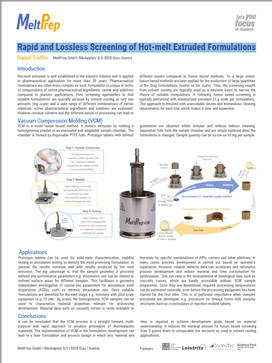- Home
- Blog
- News
- Basics
- Sources
- Agencies, Regulatory & Organisations
- CERSI Excipients Browser
- Excipient Report
- Excipient DMF List
- EXCiPACT Certified Companies
- Excipient Documentation
- Excipient EINECS Numbers
- Excipient E-Numbers
- FDA Inactive Ingredient List
- FDA GRAS Substances (SCOGS) Database
- IPEC Americas
- USP - U.S. Pharmacopeia
- Definitions
- Whitepapers / Publications
- Supplier
- Services
- Media
- Events
- 1st pharmaexcipients Poster Award
- Event Calendar
- Events featured by pharma-excipients
- 4th Annual Formulation & Drug Delivery Congress
- DDF Summit
- ExcipientFest Americas
- ExcipientFest Asia
- Global CompliancePanel
- International Conference and Exhibition on Pharmaceutics & Novel Drug Delivery Systems
- Formulation & Drug Delivery USA Congress
- Laboratory Medicine 2018
- Making Pharmaceuticals Europe
- Making Pharmaceuticals Exhibition
- Pharma Integrates
- PharmaExcipients China @CPhI China
- TTC Technology Training Center
- Jobs
- Online Sourcing
- Contact
Rapid and Lossless Screening of Hot-Melt Extruded Formulations

D. Treffer, MeltPrep GmbH, Nikolaiplatz 4/3, 8020 Graz Austria
Introduction:
Hot-melt extrusion is a process originally developed for the plastics industry. It is well established in the plastics industry and is applied in pharmaceutical application for more than 30 years However, pharmaceutical formulations are often more complex as each formulation is unique in terms of compositions of active pharmaceutical ingredients, carrier and additives.
Aims:
The aim of this study is to introduce a novel approach for the screening of solid dispersion produced via extrusion. Conventional screening approaches to find suitable formulations are typically pursued by solvent casting at very low amounts (mg scale). A wide range of different combinations of carrier materials, active pharmaceutical ingredients and additives are evaluated. However, residual solvents and the different nature of processing can lead to different results compared to fusion-based methods.
Methods:
Vacuum Compression Molding (VCM) by MeltPrep is a novel fusion-based screening method. It mimics extrusion by melting a homogeneous powder in an evacuated and adaptable sample chamber. The chamber is formed by disposable PTFE foils. Prototype tablets with defined geometries are obtained within minutes and without tedious cleaning. Separation foils form the sample chamber and are simply replaced when the formulation is changed. For the smallest dimension of 5 mm in diameter samples can be produced using as little as 10 mg material, which makes it the first fusion-based screening method within the mg scale. A melting and solidification cycle typically takes less than 10 minutes and is performed on the VCM Essentials. The VCM Tool is evacuated and subsequently heated and cooled, shaping the homogeneous sample. The sample chamber is adaptable in height and always fits the filled amount of material. Arbitrary heights can be produced simply by adjusting the sample mass. The sample height can vary from 0.1 mm up to several millimeters. In addition, multilayer prototypes can be produced by simply loading VCM samples in the desired order into the VCM Insert and molding them to one single multilayer tablet. By this, VCM can mimic complex structures within a short period of time - as recently demonstrated with a study for intravaginal rings.
Results:
Prototype tablets can be used for solid-state characterization, stability testing or dissolution testing to identify the most promising formulation. In general, the results correlate well with results produced by hot melt extrusion. The big advantage is, that the sample geometry is precisely defined and performance parameters e.g. dissolution rate can be related to defined surface areas for different samples. This facilitates a geometry independent investigation of crucial key parameters for amorphous solid dispersions (ASDs), such as intrinsic dissolution rate. Once suitable formulations are identified, they are transferred to the next stage, e.g. extrusion with pilot scale equipment (e.g. 12 mm - kg scale) with ease as all relevant design material parameters can be derived on VCM samples.
Conclusions:
It can be concluded that the VCM process is a straight forward, multi-purpose and rapid approach to produce prototypes of thermoplastic materials. The implementation of VCM in the formulation development can lead to a lean formulation and process design in which less material and time is required to achieve development goals based on material understanding. It reduces the material amount for fusion based screening from 5 grams down to comparable low amounts as used in solvent casting applications.
Keywords: Hot Melt Extrusion, Screening, Amorphous Solid dispersion, Multilayer Systems
